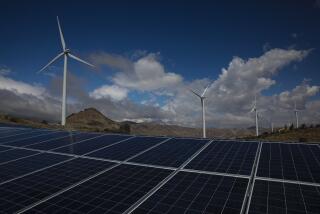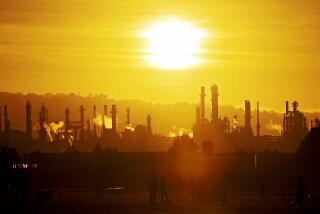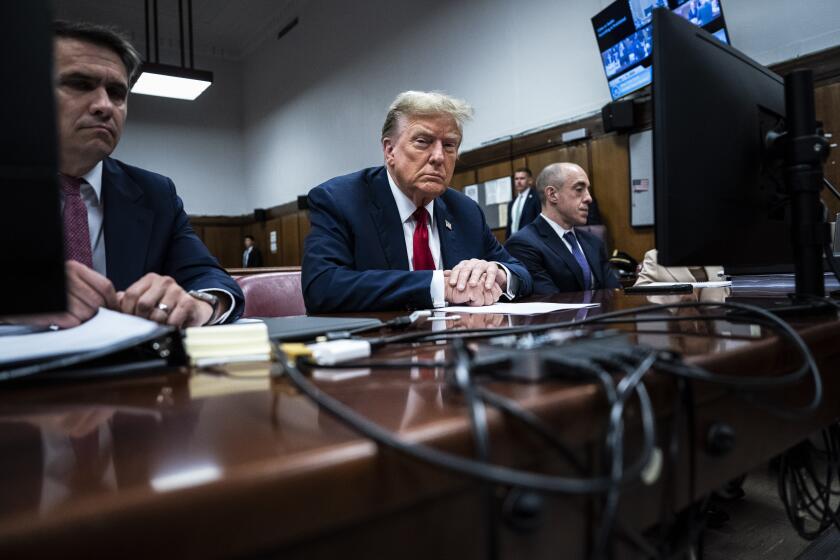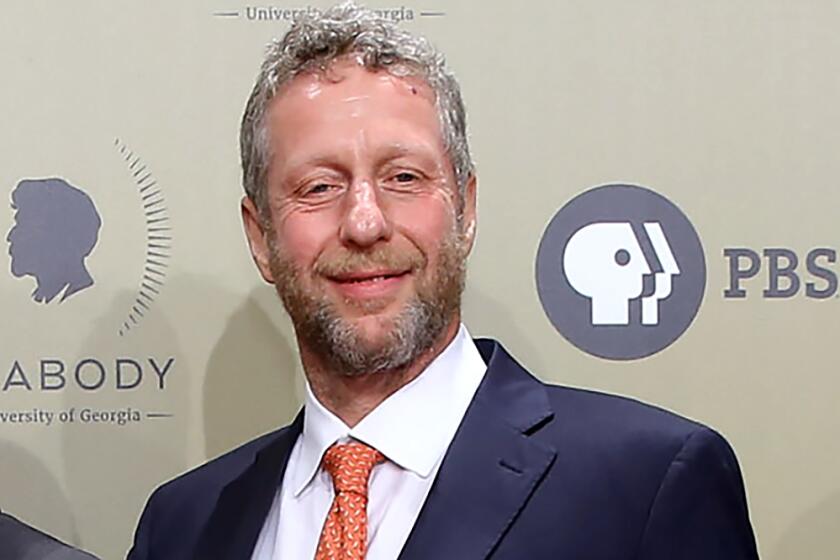How far can California push the nation — and the world? Jerry Brown’s climate summit may provide the answer
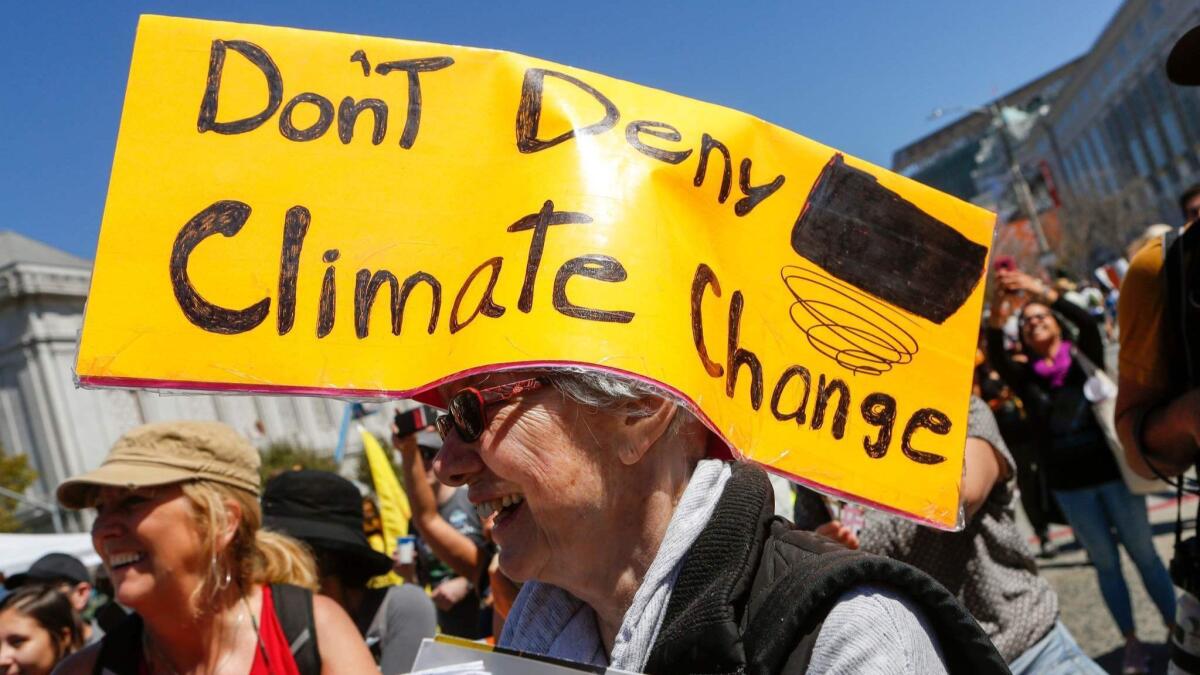
Even as California forged its own path for years to battle global warming, pressing forward whether Washington agreed or not, skeptics have persistently scolded that it is just a state — it can’t set policy for the nation, much less the world.
If California ever had a moment to prove them wrong, it is now. At the international climate summit Gov. Jerry Brown will kick off Wednesday in San Francisco, the state is playing a role none ever has, pushing the rest of the country to join other nations in enforcing a landmark agreement on climate change that President Trump has quit.
Put simply, the three-day environmental summit will test whether California can bring the country to a place Congress and the White House won’t.
“This is a very odd challenge we have,” Brown said in an interview in his office. “It is coming at us from all over the planet. Everyone is contributing and everyone has got to do something to combat it. It is a totally unique world challenge, never before faced. There is nothing like this.”
Indeed, as the Trump administration prepared this week to ease regulations on methane, one of the most potent greenhouse gases, many states are looking to follow California and Colorado in pursuing policies that require energy firms to capture the methane their drilling operations release and convert it into electricity.
In other sectors, more ambitious commitments may be made. California’s new law — signed Monday — putting the state on a path to 100% renewable energy could motivate others to make similar pledges this week.
MORE: California to rely on 100% clean electricity by 2045 under bill signed by Gov. Jerry Brown »
Brown had not planned the summit as an act of defiance. The idea emerged soon after the Paris climate change accord was signed in 2015, with strong support from President Obama, and the world assumed the United States would take a lead role in cutting carbon emissions in an effort to ease global warming.
It made perfect sense then that California — America’s leader in clean tech innovation and climate action — would host a high-stakes gathering of political leaders to cement the Paris benchmarks, assess progress and form new partnerships. The state already has demonstrated how aggressive climate action can boost a large economy.
In the Trump era, however, the event morphed into something else. The president has made clear his administration does not agree with mainstream climate science, and sees no need to cut emissions at the pace the Intergovernmental Panel on Climate Change warns will be crucial to dodge catastrophic warming.
Yet roughly half of Americans live in states that are racing to meet goals in the Paris agreement. Half of America’s largest cities have made commitments to go beyond state action. And according to a Quinnipiac poll last month, 64% of U.S. voters believe the nation should do more to combat global warming. With Congress up for grabs in November, candidates are being grilled about Trump’s decision to disavow the Paris accord.
“The Trump administration is visibly dismantling Obama-era climate programs, and doing it loudly in a way people see and can understand, and it is attacking science more generally in very visible ways,” said Ann Carlson, an environmental law professor at UCLA. “California is big enough and splashy enough, and Jerry Brown is famous enough, that people are paying attention to what California is doing about it.”
Brown said the state has been preparing since President Nixon signed the Clean Air Act, one of the nation’s first and most important environmental laws, in 1970.
After that, “we developed the institutional capacity and the bureaucratic understanding to combat pollution and carbon emissions,” Brown said. “We are positioned well to deal with the problem. Not to take advantage of this would be a tragedy.”
During the summit, San Francisco will be swarmed with climate thinkers, crusading celebrities and political leaders racing to and from events that range from cerebral to spectacle. Conferees attending a deep dive in methane reductions in the morning can groove to the Grateful Dead’s Bob Weir at an evening concert.
But much of the summit will be a grind. Inching toward the Paris goals involves government officials collaborating on and finding new paths for often mundane tasks, from using more sustainable cement to procuring electric buses.
Even before the opening ceremony, summit leaders announced a breakthrough on garbage. Cities involved pledged to find alternatives to landfills and incineration for at least 70% of their trash by 2030.
Local efforts to zero out coal emissions will also be on display, along with plans to advance technologies that capture industrial emissions and store them underground.
“The point is to get people to think about doing more, and then to join with others who have gone through that process and, through that encounter with others, to up the general commitment of the world,” Brown said.
It adds up. A recent study published by Yale University found that all the “subnational” actions around the world — and most acutely in the United States — are on target to bring the planet halfway to meeting the Paris goals.
That still leaves a long way to go. The summit will test how much cities, states and the private sector can do to fill the gap.
“There are many cities that can do more,” said Niklas Hoehne, one of the study’s authors. “And there are many more companies that want to do more.”
Although many summit attendees may view Trump as a villain, Los Angeles Mayor Eric Garcetti said climate change should not be seen as a partisan issue. More than a few Republicans will attend. And he notes that the largest American city running on 100% renewable power now is Georgetown, Texas, a conservative community of 67,000 people with a Republican mayor.
“This is not just a California, blue state thing,” Garcetti said. “Across party lines, people are taking action. I think most people see Trump as an aberration.”
Mayors are particularly motivated to act, Garcetti said. Many already battle the fallout of a warming planet: raging forest fires, devastating floods, more destructive hurricanes and heat emergencies.
“We know this is happening,” he said. “In the past, these summits were about information. Now it is about action.… Some of us already know how to do this technical work, how to measure emissions and commit [to cutting them]. Now, we are bringing it to other cities.”
The challenge for summit organizers is building a system to track and monitor all the pledges made by the thousands of states, cities and businesses determined to do their part to meet the Paris goals.
“We have the wisdom, the commitment, the experience and the collaborative spirit to work in ways that may not exist anywhere on the planet,” Brown said. “We’ve got to take advantage of it.”
Still, he said, the task is daunting.
“This is like rolling a gigantic boulder up Mt. Everest,” Brown said. “And we are at the bottom.”
The latest look at the Trump administration and the rest of Washington »
More stories from Evan Halper »
evan.halper@latimes.com | Twitter: @evanhalper
Times staff writer John Myers in Sacramento contributed to this report.
More to Read
Get the L.A. Times Politics newsletter
Deeply reported insights into legislation, politics and policy from Sacramento, Washington and beyond. In your inbox three times per week.
You may occasionally receive promotional content from the Los Angeles Times.

